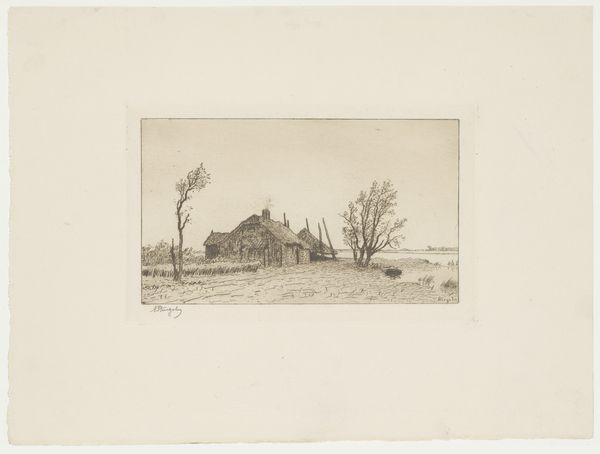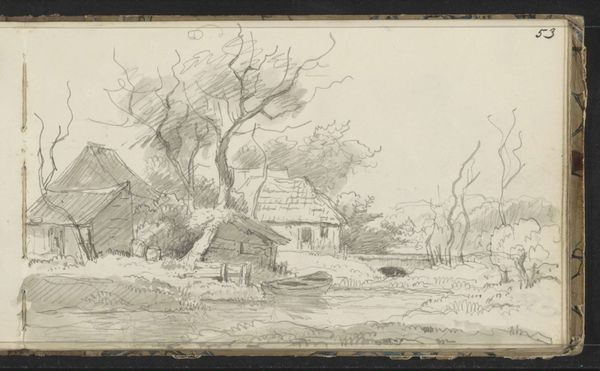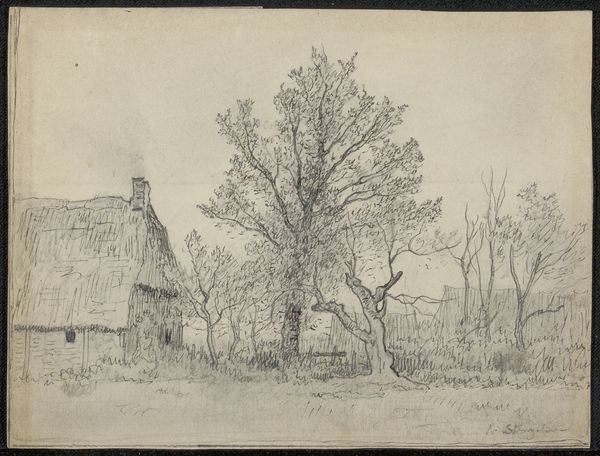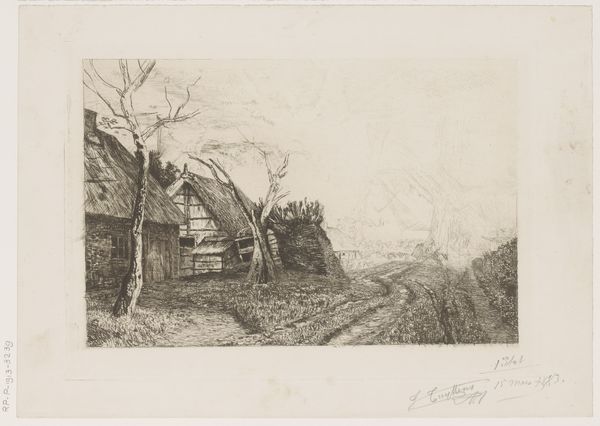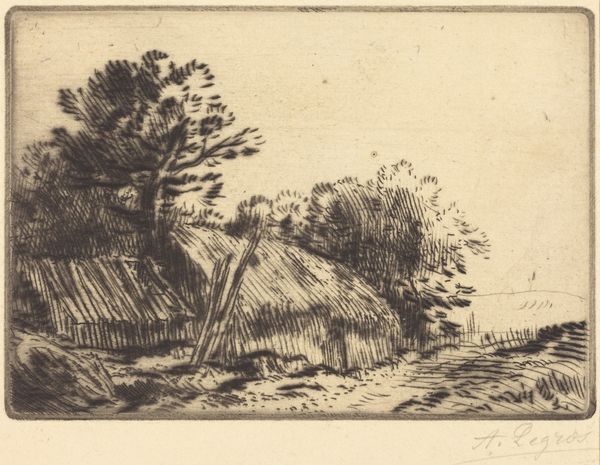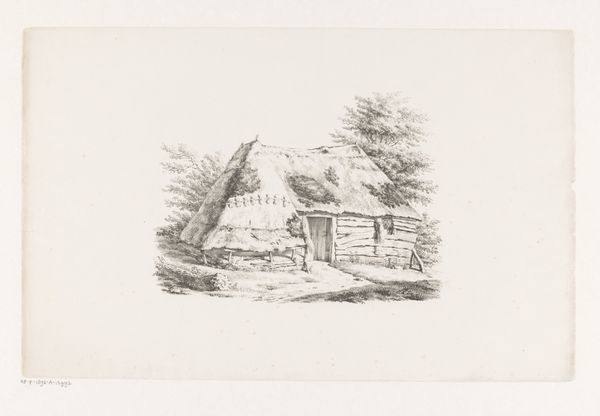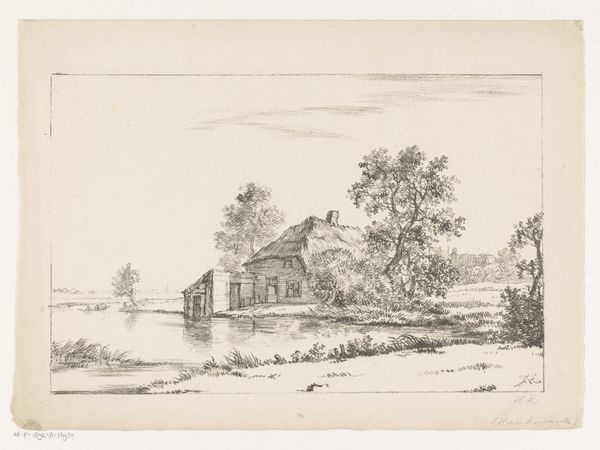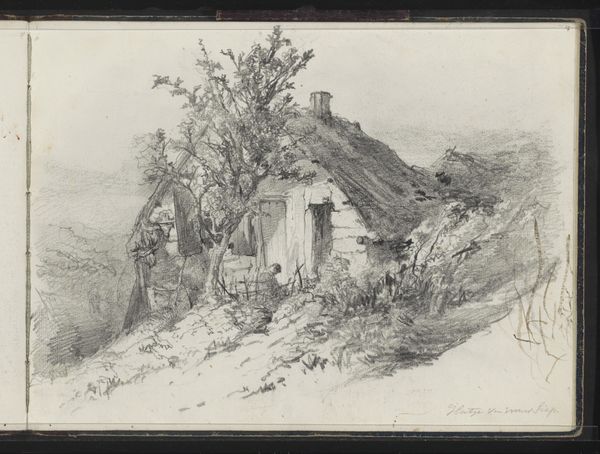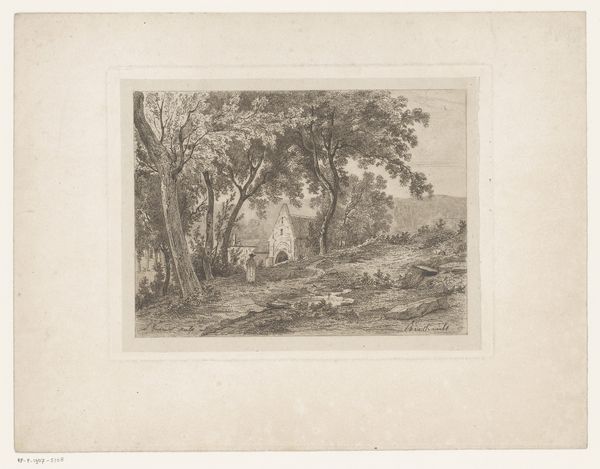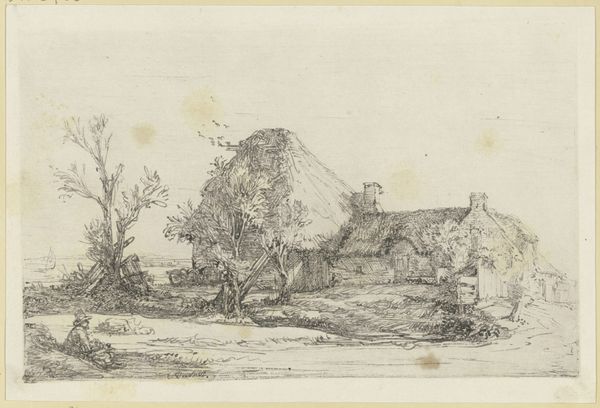
drawing, print, etching
#
drawing
# print
#
etching
#
landscape
#
realism
Copyright: National Gallery of Art: CC0 1.0
Curator: This is "Thatched Cottage," or "Chaumiere," by Alphonse Legros. The etching offers us a glimpse into a rustic landscape. Editor: It feels bleak, doesn’t it? The lone tree in the foreground, practically skeletal, dominates the composition despite the presence of the buildings. The bare branches mirror the etching lines, creating a harsh visual harmony. Curator: Indeed. Notice how Legros employs etching to achieve a remarkable tonal range. The hatching and cross-hatching give depth to the thatched roof and the stone walls. He also uses line weight variably, indicating surface textures. The work reminds me of late 19th-century realist printmaking practices, similar to works produced by artists active in the French Barbizon school. Editor: For me, the roughness of the marks adds a raw, unidealized quality. It seems that the labor invested in the upkeep of this cottage would be immense. Look at the broken wall to the left! I see not just a structure but the hands that built and perhaps failed to maintain it. Is this not the honest toil that fueled the Pre-Raphaelite imagination of figures like William Morris? Curator: Interesting association! One might interpret the structure as a symbol, evoking themes of transience. However, looking closely, note that there's an almost neoclassical simplicity. Editor: Do you believe this simplification obscures the realities faced by those who depend on its resources? Curator: Not necessarily. The cottage stands resolute. Legros seems fascinated with structure above all. Observe the interplay of light and shadow. There is no extraneous detail here to obfuscate structure; the lines create mass. Editor: Perhaps. Ultimately, the print offers contrasting perceptions. The formal properties showcase a deliberate visual order. I would love to know about the living that depended upon the cottage in Legros’ era. Curator: Well, thinking of visual presence and the lack of human subjects… that lack brings it all home, and I must agree that, on closer inspection, the work becomes more evocative, revealing layers of meaning in both technique and form.
Comments
No comments
Be the first to comment and join the conversation on the ultimate creative platform.
